The Forest Landscape Restoration Movement Fills the Tree-Planting Pledge Gap


Reforestation pledges are perceived as a politically neutral, publicity-friendly way for corporations to demonstrate their commitment to reduce greenhouse gas emissions in the fight against climate change. But forestry experts have begun drawing attention to significant shortcomings in conventional tree-planting programs. Instead, they advocate for a new approach, called forest landscape restoration, that provides for overall ecosystem health and community well-being.
What’s right with planting trees
The benefits of trees have been part of the public conversation for generations, fostered in part by corporate tree-planting programs that emphasize soil retention, water conservation and runoff prevention.
In contrast, the carbon sequestration benefit of trees has not been on the public radar until recent years. Nevertheless, scientists dating back to the 17th and 18th centuries were already beginning to piece together the elements of photosynthesis, in which trees and other plants capture and store carbon dioxide from the air.
By the late 19th century, scientists also assembled evidence that human-related carbon emissions were producing a “hot-house effect,” leading to a rise in global temperatures. These early observations were finally quantified in the 1950s when methods to measure the impact of tree and plant growth on global carbon dioxide levels emerged.
Though it took another 60 years or so, the scientific quantification of tree-based carbon sequestration set the stage for business leaders to champion large scale tree-planting programs as a climate action tool.
What’s wrong with planting trees
Corporate interest in tree-planting jumped in recent years alongside new research demonstrating that large-scale planting programs could become a powerful carbon sequestration strategy.
In 2019, for example, a Swiss research team estimated that an area of the Earth equivalent to the U.S. could be available for reforestation, capturing 300 billion metric tons of carbon from the atmosphere as the new trees mature.
Corporate interest in tree-planting is also supported by high-profile environmental groups, non-governmental organizations and other groups such as the World Economic Forum, which set a trillion-tree goal at the 2020 launch of its “1t” reforestation initiative.
However, by 2020 red flags were already beginning to emerge. One key issue is WEF’s focus on planting trees to produce lumber, paper and other forest products. In that context, it is no surprise that the initiative received support from former Republican President Donald Trump, despite his long record of undermining climate science.
In voicing support for the WEF initiative, the Trump administration also referenced forest commodities and related key words like forest management and productivity. Similarly, the 2020 “Trillion Trees Act” sponsored by Republicans in the House of Representatives commingled forest products with environmental goals.
In July, Associated Press reporter Stephen Groves noted that the trillion trees bill, which is hung up in committee, “checks the right boxes” for Republicans. “It is friendly to the timber industry and touts a climate solution — sequestering a massive amount of carbon from manmade emissions — that would also partially alleviate the need to wean the country off fossil fuels,” Groves wrote.
The need for a more holistic approach
On Friday, The New York Times published an op-ed by the essayist Claire Cameron, who explained one good reason why entwining forest commodities with tree-planting initiatives does not necessarily result in an environmentally desirable outcome. That’s because commodities reforestation tends to focus on just one species, with an eye on future harvests.
“Forestry experts understand that a monoculture of trees — like the black spruce saplings we were planting, six feet apart in neat rows — has made wildfires more likely and much worse when they occur,” Cameron wrote, in recollection of the summer she spent planting trees in Canada. The area had been clear-cut, and it would be harvested again once the new trees matured.
“Much later, I learned that the trees we were planting, black spruce, are so combustible that firefighters call them gas on a stick,” she added.
Cameron also drew attention to a June report released by the independent watchdog organization Forest Practices Board of British Columbia, which linked monoculture tree-planting programs to an increased risk of severe wildfires.
A more sustainable approach: Forest landscape restoration
In a naturally regenerated forest, fire-susceptible trees would be cushioned by other fire-resistant species that retain more moisture. This type of consideration is at work in the emerging field of forest landscape restoration.
“More than just planting trees, forest landscape restoration aims to restore the natural functioning of ecosystems in deforested and degraded landscapes, while also supporting the livelihoods and well-being of the people who live there,” Fran Price, who leads the WWF's Global Forest Practice initiative, wrote in an op/ed for the International Institute for Sustainable Development.
Forest landscape restoration does not preclude human activity in forests. Instead, the focus is on engaging local communities in long-term, sustainable forest management practices, aided by the latest science as well as Indigenous and traditional experience.
Among other case studies, WWF cites a pilot program in the Amazonian province of Tahuamanu, Peru, where to livestock farmers are implementing practices aimed at reducing the rate of deforestation while increasing productivity.
Challenges and opportunities: It’s all about the seeds
Corporations seeking to support forest landscape restoration initiatives should be aware that there is no one-size-fits-all solution.
“Community-based forest management is widely recognized as one of the more effective measures for stopping deforestation,” WWF observes. “However, the effectiveness of community management is dependent upon the broader socio-economic context, including tenure type, community governance, local capacity, opportunity cost and incentives.”
Business leaders can ensure the success of reforestation initiatives by raising the engagement of these under-represented local communities.
For example, one key factor in a successful, large-scale landscape restoration initiative is the availability of a sufficient supply of native seeds.
A research team recently studied the challenges besetting seed supply systems in Burkina Faso, Cameroon, Ghana and Kenya, which set a collective commitment to restore 24.1 million hectares (more than 93,000 square miles) of degraded land. Challenges they face along the way include a “lack of policies, capacity building, financial investment and involvement of local community members,” the researchers observed.
“A greater involvement of stakeholders from different societal levels and sectors would be an important step in building a better foundation for further capacity development,” they added.
They identified building up a community supplier network for natives seeds as a key step toward achieving successful restoration initiatives. That provides several opportunities for corporate involvement, including help with procuring digital tools and mobile phones.
In addition to increasing the supply of high-quality native seeds, the network would provide new income opportunities for local communities and incentivize the conservation of native species.
As the forest landscape restoration movement grows, business leaders have new opportunities to demonstrate that their understanding of tree-planting has also matured into a more sustainable model that avoids the environmental mistakes of the past and focuses on community well-being.
Image credit: Olena Bohovyk/Unsplash
LGBTQ+ Inclusion and a New Form of Corporate Advocacy


Most people wouldn’t see corporate advocacy as a source of great hope for the world, as stories about business efforts to block change continue to make headlines. The Financial Times reported that major chemical and plastics manufacturers are lobbying to weaken a proposed U.N. treaty on plastics. TechCrunch reported a concerted push by the major tech firms to "weaken EU rules" on data and consumer privacy. Multiple outlets described how lobbying from the meat industry caused the removal of plant-based policy recommendations from the latest Intergovernmental Panel on Climate Change (IPCC) report.
This is everything people distrust about business: working to serve its own direct interests and delay action, block change and dilute progress on major societal issues. And it lays the ground for populist rallying cries to "drain the swamp."
Unsurprisingly, this isn’t the kind of corporate advocacy we’re recommending. In our new book, "The Activist Leader," we describe how businesses can take action to make a meaningful impact on societal issues — and can draw on that experience to add their voice to the public discourse in order to mobilize further action. When this happens, advocacy becomes an important contribution that a business can make. The way businesses have spoken out on LGBTQ+ inclusion shows how this can work in practice.
LGBTQ+ rights: Businesses speaking out to advance inclusion
Against a backdrop of steady progress toward inclusion globally, millions of LGBTQ+ people are experiencing a new intensity of discrimination, harassment and violence. In some regions, LGBTQ+ rights have become a geopolitical wedge issue, an assertion of national values in opposition to a global culture: in Eastern Europe, for example, or some African countries. Against this backdrop, many global businesses struggle to reconcile how they operate in these territories with their vocal support for LGBTQ+ inclusion as a company.
As this situation developed, we heard from business leaders wanting to speak out but finding it hard to do so — not only because of the potential impact on their business, but also because of the safety of their employees. To help find a coherent and collective business voice on this subject, Brunswick established Open For Business as a coalition of global companies working to advance LGBTQ+ rights even in challenging countries.
The Open For Business approach centers on data-driven advocacy: Rather than become embroiled in a clash of moral systems, the coalition makes the case that open, inclusive societies are better for business and better for economic growth. Marshalling evidence that shows how open, inclusive policies are associated with increased levels of entrepreneurialism, stronger high-value business sectors, greater foreign direct investment and, ultimately, greater economic competitiveness and resilience resonates with economic policymakers. The coalition has grown to more than 40 high-profile global companies that include Accenture, Burberry, Diageo, Facebook, GSK, Google, Lego, Mastercard, McKinsey and Unilever.
The data-led approach has delivered a track record of successful advocacy. Used by local frontline nonprofit groups, highly vocal global LGBTQ+ champions and business leaders alike, Open For Business reports have become part of court proceedings in Uganda, Hong Kong and India, each with positive rulings for LGBTQ+ equality. They’ve been part of winning campaigns for marriage equality in Costa Rica, the Czech Republic and Taiwan. The reports on the economic case for LGBTQ+ inclusion have made headlines and changed the conversation in countries in East Africa, Eastern Europe and the Caribbean.
But why would the global drinks business Diageo, or the tech giant IBM, or the cosmetics brand L’Oréal speak out on LGBTQ+ rights? At first pass, it might seem somewhat random. However, for these companies and others in the coalition, their advocacy is grounded in strong positions and hard work to establish an inclusive culture for their own workforce, often built up painstakingly over years.
It’s not a sudden response to media headlines. They know their employees want to know where they stand on this issue, in the light of their stated principles as global companies. They feel conflicted by the rise in anti-LGBTQ+ sentiment and policies in some places that are dissonant with their long-held principles and are seeking mechanisms that enable them to speak up.
The power of the collective voice elevates the potential of each individual company to advocate for inclusion to policymakers and other influential corporate stakeholders.
Stepping into the public arena, armed with data and standing in common cause with partners, underpins the credibility of the company’s voice – on any subject from net zero to inclusion – and makes issue-led advocacy an impactful element of activist leadership.
This story was adapted from "The Activist Leader: New Mindset for Doing Business" by Jon Miller and Lucy Parker, published this week by HarperCollins. Copyright © 2023 by Lucy Parker and Jon Miller. Reprinted courtesy of Harper Collins Inc
Image credit: yyananran/Unsplash
NYC Mayor on Climate Crisis: ‘Desperation is Inspiration’
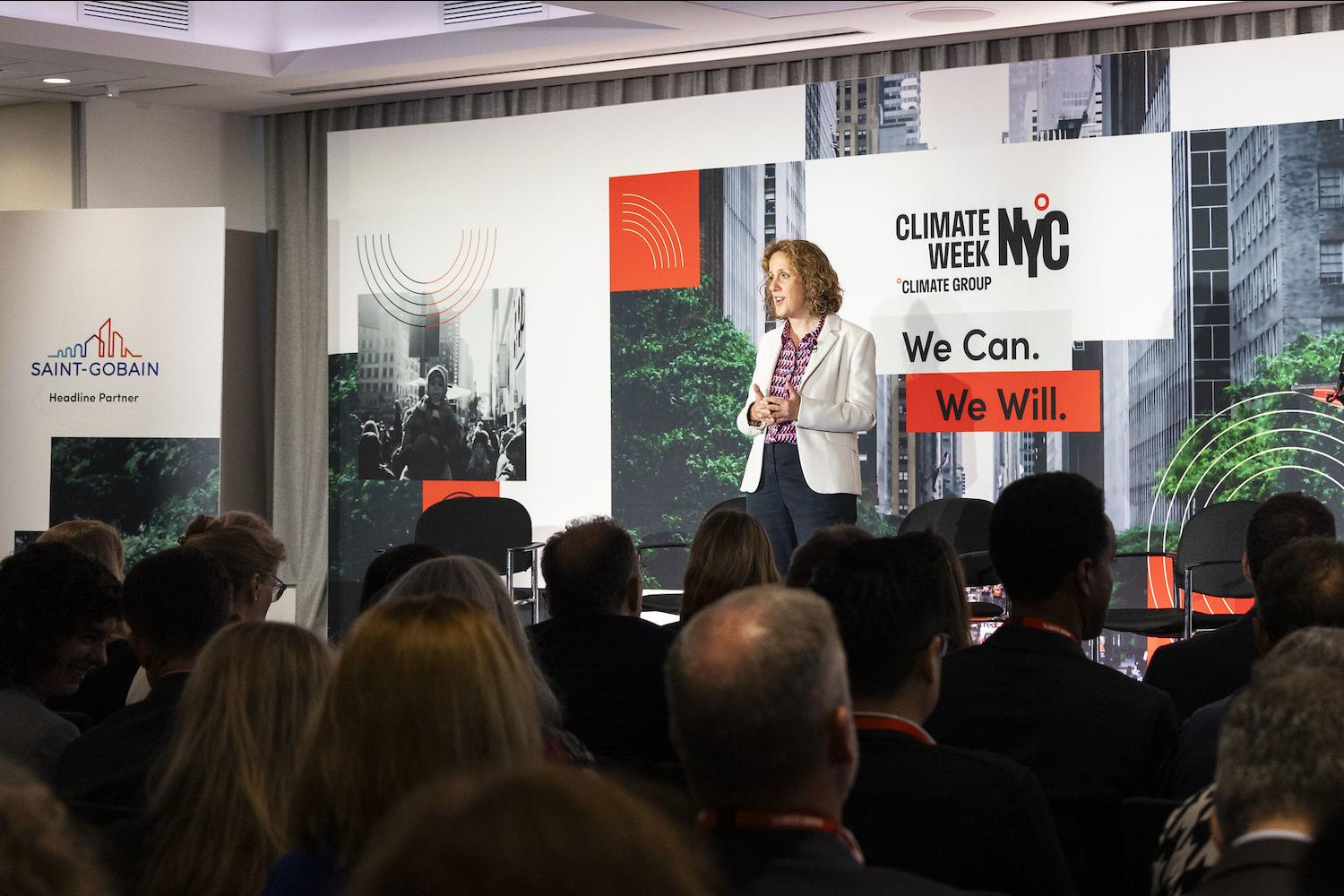
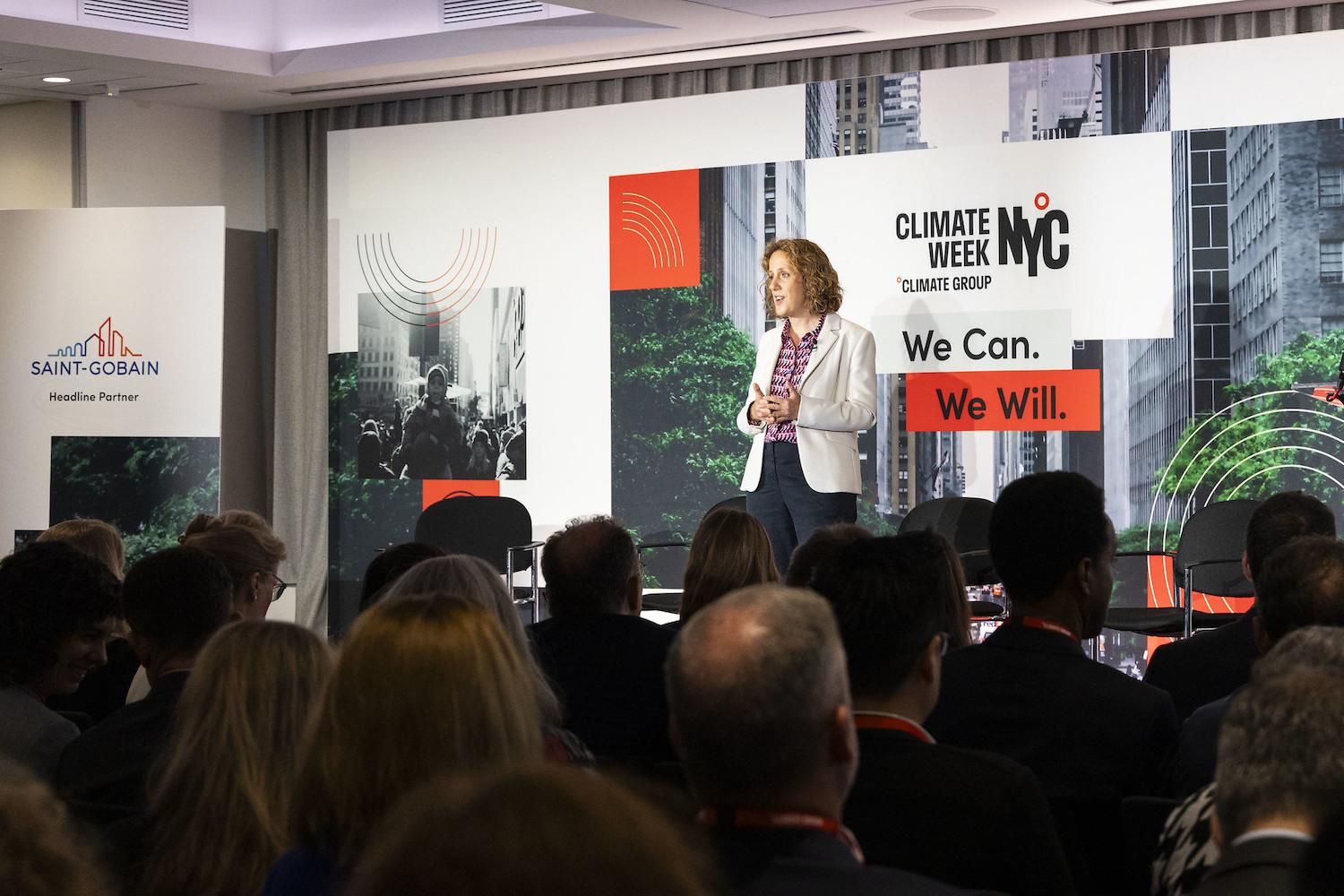
Leaders gather at Climate Week 2023 events under the tagline, "We can. We will." (Image credit: The Climate Group/Flickr)
“Desperation is inspiration,” New York City Mayor Eric Adams said today as he convened multiple sustainability events running parallel to the United Nations General Assembly.
At the Concordia Summit, a gathering of cross-sector social impact professionals, the mayor of the nation’s largest city alluded to his own diabetes diagnosis as he urged action on climate, immigration and social inequity.
“My body looked fine but was breaking down internally. I was too busy taking selfies. I should have taken internal selfies,” Adams told a standing room crowd at a Sheraton New York Times Square hotel ballroom. “It is, to me, the analogy of our globe. Our planet is our body.”
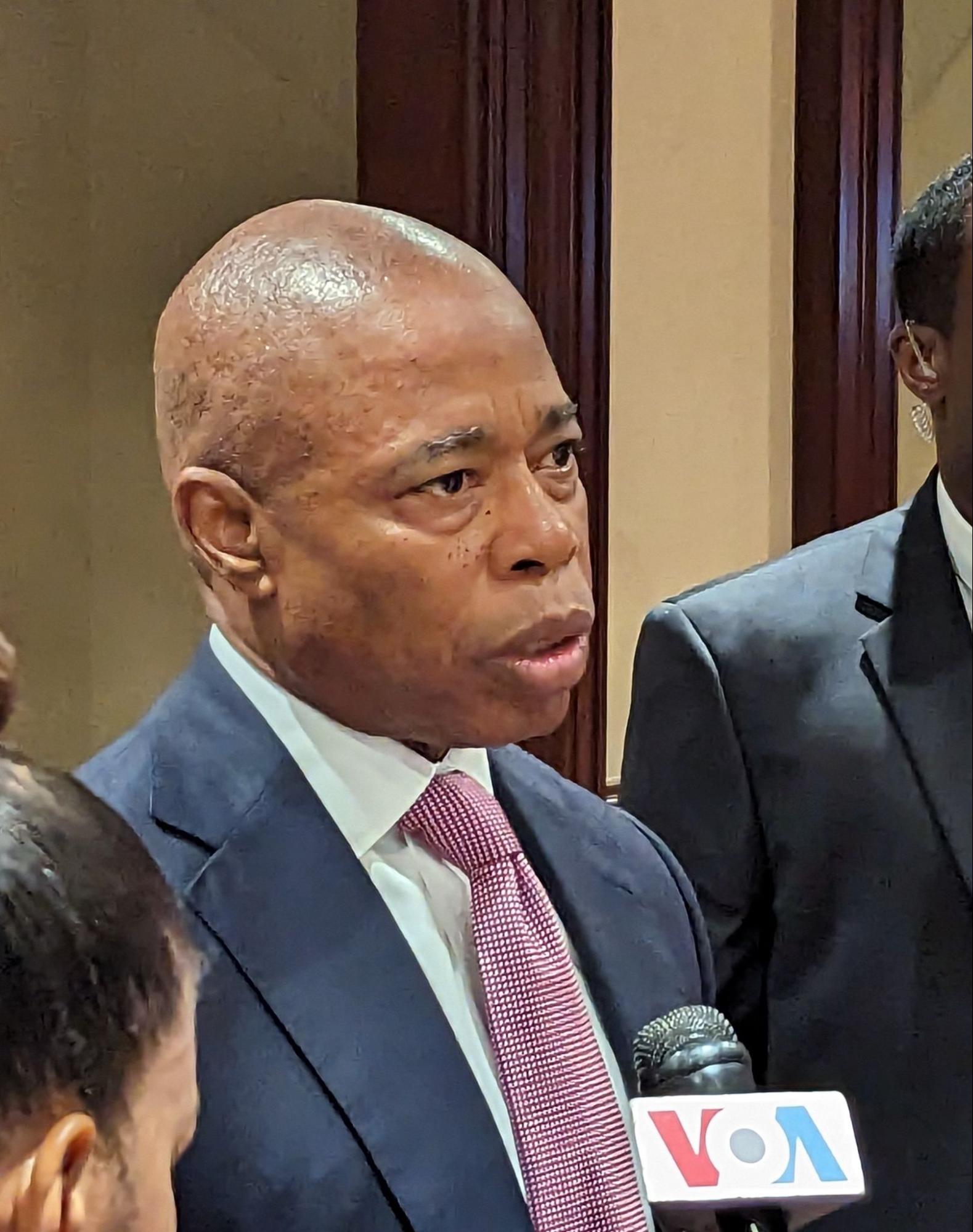
Adams, who said he overcame diabetes by adopting a plant-based diet and losing 30 pounds, took a bow for introducing a vegetarian menu to city-owned hospitals, and to public schools on Mondays and Fridays.
The first-term Democrat used the Concordia address to take aim at stable, affluent nations for failing to fight harder to slow global warming, referencing smoke from Canadian wildfires and mass migration from weather- and war-ravaged nations as symptoms being felt in New York.
“Walls, boundaries and geographic lines are not going to curtail the crises,” he said.
In addition to the Concordia Summit and the U.N. General Assembly, New York is host this week to the Clinton Global Initiative, Sustainable Development Goals Leaders Summit, numerous Climate Week events and the Global Citizen Festival. TriplePundit and its parent company, 3BL, will be there and bring the relevant news to you across our channels.
Moving Beyond Targets: The Time is Now for Climate Transition Action Plans


As the material business risks from climate change become increasingly clear, more than a third of the world’s largest 2,000 companies have set goals to reach net zero emissions by 2050 or sooner. Many companies have gone even further, setting emission reduction targets that are in line with what the latest climate science says are needed to meet the goals of the Paris Accords and limit global warming to 1.5 degrees Celsius. They are also disclosing information about the impacts of their business on carbon dioxide and other greenhouse gas emissions, water quality and scarcity, and nature.
This is tremendous progress and highlights that companies see opportunities to be had in tackling these risks. But awash with targets and goals, investors and other stakeholders still have one core question: What meaningful and measurable actions are companies taking today, and in the near-term, to meet these targets?
Climate transition action plans have emerged as a leading framework for companies to identify, plan, and implement strategies that reduce climate-related risks and maximize opportunities. These actions should be specific, time-bound and, if possible, quantified to detail the emissions reductions that companies expect to achieve.
While targets and disclosures are both deeply important, too often companies lack a forward-looking strategy that defines how they will work to achieve these targets in the next three to five years — both within and beyond their operations.
In fact, organizations that analyze and track climate action — such as the Science-Based Target initiative, Net Zero Tracker, Transition Pathway Initiative and CDP — have found that an alarming number of companies have yet to develop these plans. For instance, out of nearly 19,000 companies that annually report their climate impacts to CDP, only 13 percent have disclosed a sufficient number of indicators to be considered a credible plan — and only 0.40 percent of companies met all 21 of CDP’s key indicators.
Every company knows that delivering on a goal takes a plan. Just as companies set goals and develop detailed plans for driving sales, investing in new markets or recruiting talent, they also need a detailed climate action transition plan for delivering on their goals for slashing emissions and addressing their exposure to climate risk.
And the pressure on companies to deliver these plans is ramping up. In 2022, Ceres counted just nine investors asking companies they held to publish transition plans via shareholder resolutions. In 2023, that number jumped to 61.
Addressing the Ceres Global climate conference in March 2023, Mary Schapiro, vice chair for global public policy at Bloomberg and vice chair of the Glasgow Financial Alliance for Net Zero, said: "If 2021 was the year of mainstreaming net-zero commitments and 2022 was the year of target-setting and developing the frameworks to operationalize these commitments, we are now calling 2023 the year of transition plans."
The momentum is building as investors are already implementing transition action plans to mitigate the risks climate poses to their portfolios. To help companies create and implement these plans to achieve their emissions reductions targets, Ceres’ Ambition 2030 initiative and our partners have developed action-oriented guidance and tools. At a high level, we outline four components for every transition plan:
- Actions a company will take to reduce its Scope 1, 2 and 3 emissions, covering its entire supply and value chains, in line with limiting global temperature rise to 1.5 degrees Celsius.
- Actions to identify, manage, and address climate risks and opportunities and incorporate these considerations into core business strategy and governance.
- Actions to advocate for public policies that support and enable the achievement of corporate climate targets and economy-wide emissions reductions.
- Actions to consider and support workforces, suppliers, customers, impacted communities and other stakeholders in the transition to a net-zero-emissions economy.
The time for action is now, and we encourage all companies to follow these guidelines as they develop the plans to make their targets a reality.
Image credit: Karsten Würth/Unsplash
What Do Health and Safety Ratings Mean for Sports and Entertainment? Crypto.com Arena Helps Us Find Out


The WELL Health-Safety Rating seal on display at Crypto.com Arena.
Since it opened nearly a quarter century ago, AEG’s Crypto.com Arena has been one of world’s leading multi-purpose indoor venues for sports and entertainment. Formerly known as STAPLES Center, the 950,000-square-foot facility is now well established as a leader in providing a safe environment for employees, guests, tenant teams and performers.
Building on that history, this week the venue was recognized with the prestigious WELL Health-Safety Rating from the International WELL Building Institute (IWBI).
“This is a big statement that our arena is as prepared as it can be to make sure it provides a safe environment,” Ignacio Guerra, senior vice president, operations and engineering at Crypto.com Arena, told Triple Pundit.
To earn the WELL Health-Safety Rating, Crypto.com Arena met rigorous requirements related to its operational policies, maintenance protocols and emergency plans. The rating includes more than 20 features designed to help organizations keep spaces clean and sanitized, provide essential health benefits and services, communicate health and safety efforts, ensure they have adequate emergency preparations and programs, and assess the facility’s air and water quality.
The WELL Health-Safety Rating is designed for all types of spaces in new and existing buildings. The same criteria apply across all types of buildings or facilities, from offices to arenas, said Paul Scialla, founder of IWBI.
“The rating is an evidence-based, third-party verified roadmap that helps organizations advance health-focused strategies for building operations and prepare businesses for long-term resilience,” Scialla said. “The health and safety-focused strategies in the rating support facility operators and workplace leaders to address air and water quality, cleaning procedures, emergency preparedness, health resources and stakeholder engagement. To earn the WELL Health-Safety Rating, a project needs to achieve 15 of the 23 features.”
The rating is designed to give project teams the flexibility to prioritize areas that matter to their businesses the most, Scialla said. The strategies adopted in one project might be somewhat different from those of another.
“As an organization dedicated to delivering the most memorable sports and live entertainment experiences, Crypto.com Arena has been at the forefront of adopting stringent cleaning and safety protocols and was the first NBA, NHL and WNBA Arena to receive the GBAC Star Facility Accreditation in June of 2020,” said Lee Zeidman, president of Crypto.com Arena, in a statement. “This recognition is further evidence of our commitment to ensuring that Crypto.com Arena strives to not only be one of the safest arenas possible, but also promotes an environment that supports the health and well-being of our employees, tenant teams, artists, promoters, guests, and partners.”
“The ratings process provided opportunities for Crypto.com Arena to highlight several different categories where it has been particularly innovative,” Guerra added, “For example, water extracted by the arena’s dehumidification system is reclaimed, stored in our cooling tower and used to supplement the arena's water usage.”
“Drier conditions are better for making ice, and when we pull the humidity out of the air, we don’t need to keep the building temperature quite as cold, and that way we don’t use as much electricity during the NHL hockey season,” Guerra explained.
The Green Sports Alliance, the environmentally focused trade organization that convenes stakeholders from around the sporting world to promote sustainable practices, hailed Crypto.com Arena’s achievement.
“This is a significant achievement that underscores AEG’s unwavering commitment to fostering healthy, sustainable communities where we work, live, and play,” said Roger McClendon, executive director of the Green Sports Alliance, in a statement. "AEG’s dedication to achieving this milestone exemplifies its leadership in sustainability within the sports and entertainment industry, setting a commendable global standard.”
Human health and safety are the most important factors in any business, product, service or event, McClendon told 3p. “The focus on corporate social and environmental responsibility in the sports sector continues to be a relevant topic, and the work is supported by the business leadership that includes programs like [the U.S. Green Building Council’s LEED certification] and WELL,” he said.
A key element in raising public awareness is the WELL seal displayed throughout venues like Crypto.com Arena, which includes a QR code fans can scan to learn more about the science and criteria behind the rating.
“The WELL seal is the best way to communicate the achievement,” Scialla said. "Many stadiums and venues around the world have achieved the WELL Health-Safety Rating, and the owners and operators have been proudly displaying the WELL seal at entrances.”
Stakeholder engagement and communication is part of the rating requirements. “Organizations need to proactively promote their health and well-being commitments, provide a physical or digital guide about their health and safety strategies, and regularly update the building occupants,” Scialla said. “These efforts are essential for keeping stakeholders engaged in not only what’s been achieved, but also in long-term business resilience plans.”
McClendon said that AEG’s decision to move forward with achieving the WELL rating for Crypto.com Arena should inspire other venues to follow suit. “I believe that many of the new venue and arena designs will adopt standard operating procedures that incorporate the WELL, GBAC, and LEED standards to provide the best experience for their guests and employees following the sustainability leadership of Crypto.com Arena,” McClendon said.
“Operators of other venues have already contacted Crypto.com Arena to learn more about how it succeeded in getting the WELL certification,” Guerra added. “We are not done yet by, by a long shot. We're still learning, but we have taken every one of these opportunities get these certifications to get better at what we do and learn more,” Guerra said. “We’re going to continue to do more, and the biggest benefit of that, I think, is we now have a documented track record of accomplishment.”
This article series is sponsored by AEG and produced by the TriplePundit editorial team.
Images courtesy of AEG
Looking Toward the Long-Term With Zero Fresh Water Textile Manufacturing
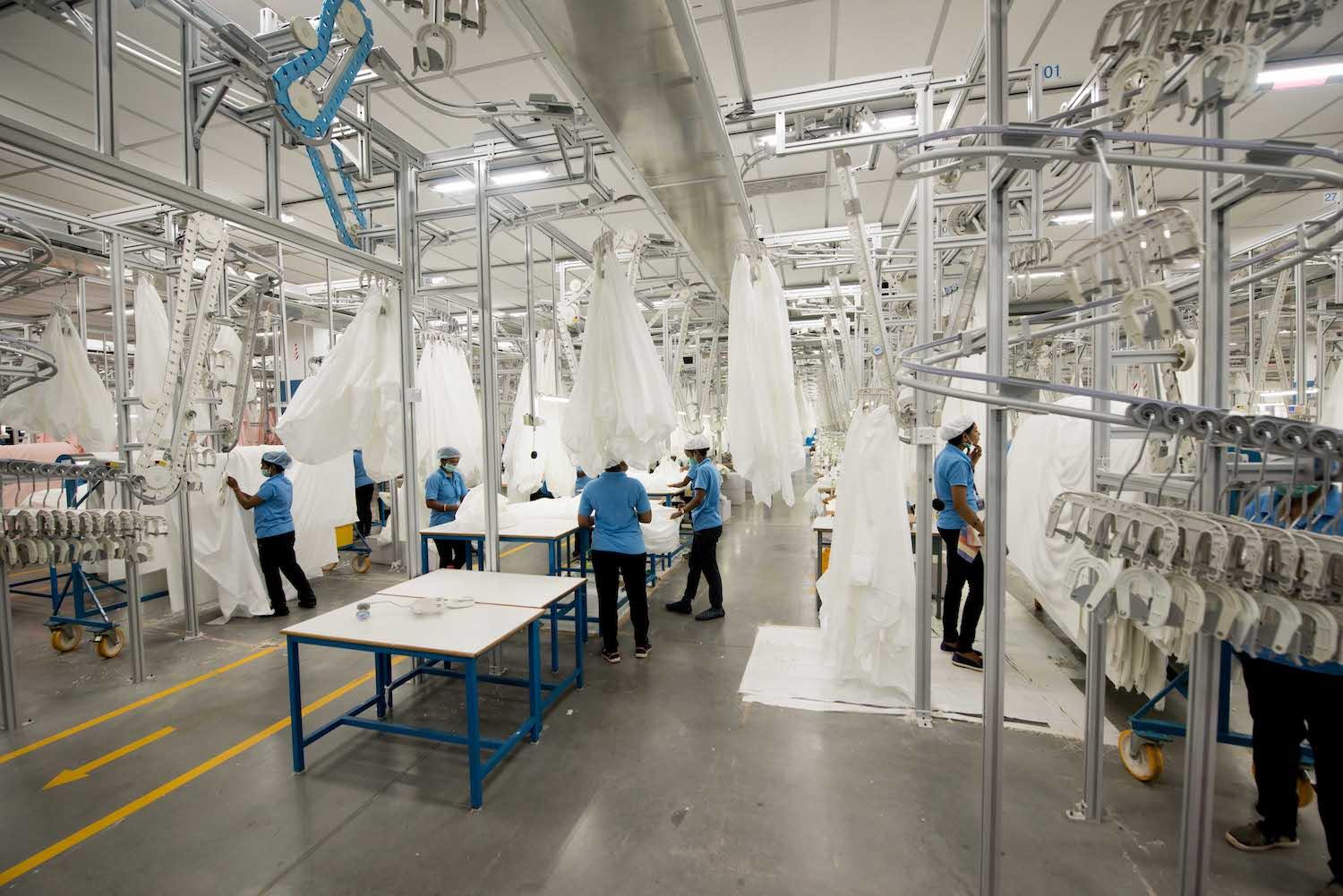
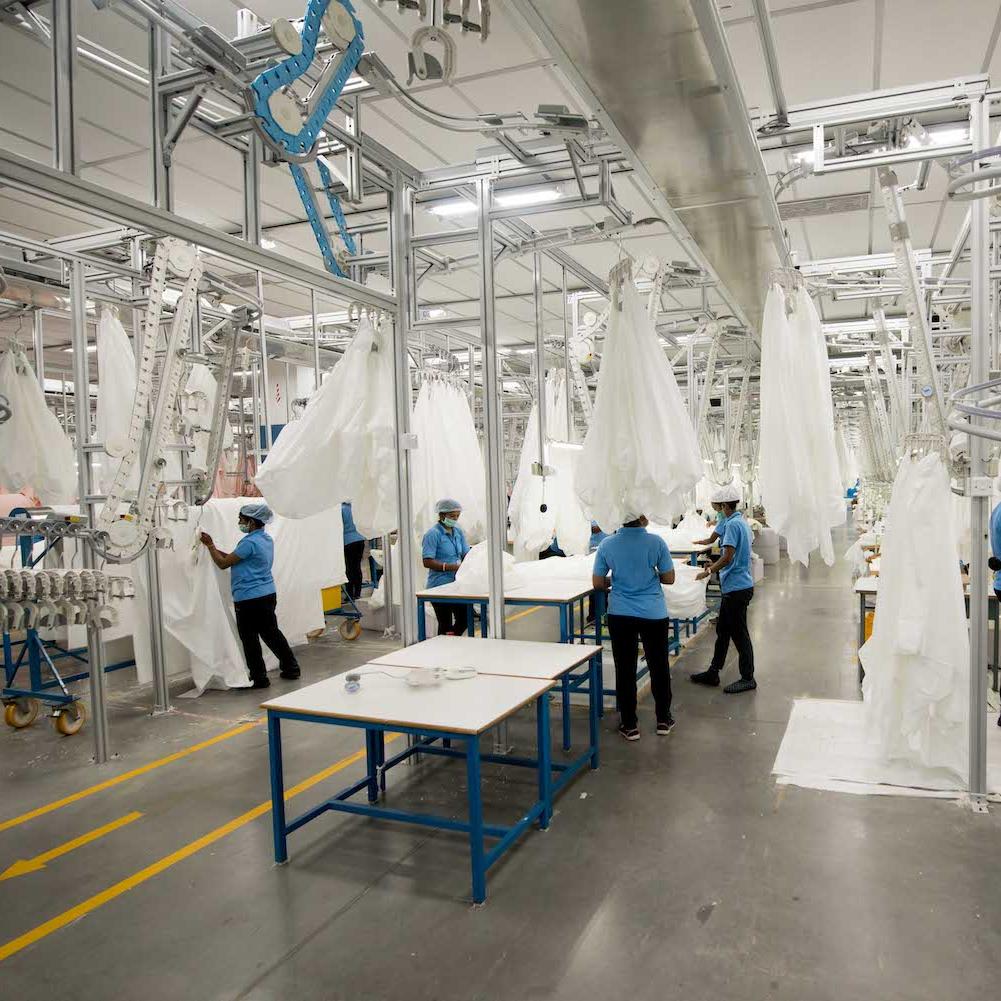
Welspun India'a zero fresh water manufacturing plant in in the Kutch region of Gujarat.
Textile production uses an enormous amount of water. At 93 billion cubic meters each year, that’s 4 percent of all freshwater utilized worldwide. From the farm to the manufacturing plant, water is an integral part of the textile industry. If not managed responsibly, this can cause scarcity and competition for limited resources in regions where textiles are produced.
Welspun India, a home textiles supplier for numerous brands on the international market, has taken an innovative approach. As a result, it uses zero fresh water during the manufacturing process. And while the same method could be utilized by more manufacturers worldwide, it’s unlikely to be emulated on a large scale so long as quarterly earnings take precedence over long-term sustainability.
“You might say that you created a sustainable product, but it's not a sustainable product when you create it in a facility which is not sustainable,” Dipali Goenka, CEO of Welspun India, told TriplePundit.
Socially responsible water usage
The road to freshwater-free textile manufacturing began in 2003 with the need to get factories up and running in an area that had been devastated by an earthquake years earlier. Supporting the community was also imperative to Welspun's operation in the Kutch region of Gujarat. “Organizations cannot work in isolation, they need … everybody together,” Goenka said. “So that's what we did. We built up communities, setting up schools there, empowering women.”
Welspun also recognized that it couldn’t monopolize the water supply in such an arid region. “Textiles are a big guzzler of water,” she explained. “There's one river that feeds that area." The Narmada River is known as a "lifeline" for the Indian states of Gujarat and Madhya Pradesh, stretching more than 800 miles and providing water to hundreds of communities. "We realized as, an organization, we had a huge responsibility," Goenka said. "If we are going to guzzle that much water and the communities will go without water, how fair is that?”
In order to solve the water problem, the company built a sewage treatment plant to process wastewater from three towns in the Kutch region. On top of the potable water that comes out of it, the municipalities are also paid a commission. It’s a win-win situation for the company, local communities and the region’s farmers.
“We can take the sewage from the communities and recycle it and use it back into our operation, so we don't use a drop of fresh water in our operations,” Goenka said. “We are really proud of it.”

A community mindset
It’s a refreshing perspective that is a product of Welspun’s environmental, social and governance (ESG) policy to become an agent of change. And the stance is going strong since, keeping pace with the company’s growth. “The capacities that we have today, the magnitude is huge,” Goenka explained, adding that the company makes 1 out of every 5 towels in the U.S.
While the tactic sounds like a simple way for manufacturers to make a huge difference in developing regions where wastewater treatment is lacking or insufficient, it also takes a substantial amount of purpose to put the future well-being of a community over immediate profit. And that’s something too many businesses still aren’t willing to do.
“It's a very heavy investment,” Goenka said, pointing to the need for a change in mindset. “Everybody has to look at becoming agents of change.” Instead of doing business for the sake of business itself, she wants to encourage companies to consider everyone involved and take the bigger picture into account.
Beyond the water treatment plant, Welspun also supports cotton farmers through teams and artificial intelligence (AI) dedicated to improving the sustainability of their agricultural practices. It also promotes certification with groups like the Better Cotton Initiative. “Better Cotton Initiative uses far lesser water than what a regular cotton crop would use,” she explained.
Community betterment doesn’t end with water
The company’s ESG initiative also seeks to uplift women in the community by providing village work centers where they can earn an income and gain financial literacy. Another initiative helps women make use of their backyards for income. “We help them learn how to use those … for kitchen gardens where they can sell and earn their livelihoods as well,” Goenka said, explaining that more than 45,000 women have been impacted through the company’s efforts.
“In the communities, we have two schools as well. But we also are reaching out to communities and impacting around 100,000 children,” she said, noting that Welspun reaches out with digital education as a part of its efforts.
Welspun India is demonstrating its dedication to ESG by focusing on the community as a whole. And where many corporations would have no problem using up scarce water resources to the detriment of the local people and farmers, the company’s refreshing perspective on corporate responsibility and long-term outcomes versus short-term profits has instead benefited those stakeholders.
Image courtesy of Welspun India
Glass Innovation Relies On Recycling


Someone once discovered that certain kinds of sand, melted at a high temperature, can become glass. That initial discovery opened the window for continuing innovation that has made glass one of the most important materials in modern life. At Owens Corning, our aspiration is to continue finding new and exciting ways to deploy the properties of glass to make the world a better place.
One way we advance this aspiration is by using recycled glass. In 2022, Owens Corning used 1.4 billion pounds of recycled glass in our manufacturing. In fact, our pink fiberglass insulation contains anywhere from 53 percent to 73 percent recycled content, depending on the specific product.
Glass can be stronger and lighter than steel, and it doesn’t corrode or rot. And through innovations like ours, it can replace traditional materials in surprising ways. Using fiberglass mat under roofing shingles provides better water resistance. Glass-reinforced concrete helps bridges last, and because it is light, it is also easy to transport and install. Used in wind turbine blades, glass reinforcements make the blades long, strong and light, which makes the turbines efficient — and wind energy may be less costly. And fiberglass insulation products help conserve energy while improving acoustics and fire resistance in the places where we work, live and play.
Glass can also be recycled over and over without losing quality, making it a great foundation material for the circular economy. But the supply of crushed post-consumer glass — also known as cullet — is at risk.
According to the U.S. Environmental Protection Agency, only 31.3 percent of all glass containers were recycled in 2018, the last year for which data have been published. In addition, many U.S. municipalities have removed glass from their curbside recycling programs, further threatening cullet supply.
This is concerning because the benefits and use cases for recycled glass are vast and well understood. Using recycled glass as a raw material decreases community landfill waste. For Owens Corning, it also lowers our energy use associated with manufacturing insulation since starting with raw materials such as sand requires more energy. The Glass Packaging Institute (GPI) reports that energy costs drop by about 2 to 3 percent for each additional 10 percent of cullet used in manufacturing. In addition, our commitment to glass recycling can help reduce our reliance on sand in the production of fiberglass insulation.
To help counteract the supply constraints for post-consumer glass, Owens Corning works with other companies and organizations to support the glass recycling industry and the glass recycling supply chain.
The Glass Recycling Coalition (GRC) and the North American Insulation Manufacturers Association (NAIMA) are two of our key partners; and in conjunction with these groups, we are focused on promoting glass recycling in several regions throughout the U.S.
We’ve also worked with NAIMA to form a glass cullet task force that aims to improve communication on end-use of glass containers, increase glass container recycling rates, improve glass cullet quality, and safeguard current recycling programs at the state and local levels.
Owens Corning participates in several educational and informational workshops, including those conducted by the Closed Loop Fund and recycled glass processor Strategic Materials, to promote open dialogue and collaboration among stakeholders interested in glass recycling.
As we work to reduce our impact on the environment, we continue our efforts to increase our use of post-consumer bottle glass in North America despite ongoing recycling challenges in several communities across the U.S.
We believe the availability of high-quality recyclable glass is critical to the ongoing execution of our environmental ambitions and our overall growth strategy. Our primary focus is on promoting glass recycling at the state and local levels, as shipping recycled glass is expensive and can negate the energy and emissions benefits. Therefore, we support a range of glass recycling efforts with the promise of glass being recycled and with low contamination.
We encourage consumers who want to contribute to the supply of recycled glass to look for local options to recycle your glass and support glass recycling programs in your community. Together, we can reduce waste and leave the world a better place for the future.
Image credit: pjhpix/Adobe Stock
This article series is sponsored by Owens Corning.
The Chocolate Industry Has A Lot of Problems. Could Direct Sourcing Help Brands Solve Them?


The $100 billion chocolate industry is at a crossroads. Rising global demand for chocolate and other cacao products has failed to improve the livelihoods of farmers in the main cacao-growing regions of West Africa and Southeast Asia. With increasing consumer demand for sustainable sourcing, along with growing awareness of labor and climate risks linked to tropical agriculture, the industry needs to shift, and fast.
“Consumers are becoming more and more aware about sustainability,” says Alexi Ernstoff, global science lead at the sustainability consulting firm Quantis, who works with many companies in the cacao sector. “The longer companies wait, the more expensive and difficult it's going to become.”
Revelations about the prevalence of child and forced labor on cacao farms in West Africa, driven primarily by low prices, forced a reckoning around ethical sourcing across the industry. Media coverage of this made for embarrassing headlines for brands. And for parents, the thought of the chocolate they give their children being produced by another child living in poverty was powerful.
“There are several reasons why cacao sourcing is challenging,” says Troy Pearley, executive vice president at the U.S. branch of fair trade chocolate purveyor Divine Chocolate. “One, it’s very difficult to earn a living income as a cacao farmer. They often struggle to meet their basic needs, and this creates challenges for farmers to properly maintain their family life and the upkeep of their farms.”
In the traditional model, most chocolate companies, and any users of cacao, purchase the ingredient from one of the big trading companies: Cargill, Olam and Barry Callebaut. Those companies collect cacao from countless farmers, often via a network of traders, meaning there is often limited visibility into their supply chains.
The truth is, brands are often as surprised as consumers when allegations of child labor, deforestation or human rights abuses are found along their supply chains. It’s a feature of a broken system, where price was the key factor, not sustainability, and due to brands lacking relationships with farmers.
But some companies, big and small, are returning to the field and finding ways to source directly, with real benefits for farmers. One is Divine Chocolate, a high-end chocolate brand founded in 2016 with the goal of doing business radically differently. From the start, it's taken a completely novel approach, eschewing the big traders entirely. To enable better sourcing, transparency and communication with cacao growing communities, Divine Chocolate works with groups like Fairtrade International, who work directly with farmers to meet a set of strict social and environmental standards.
“Change cannot be made unless key stakeholders are engaging and recognizing that it’s our responsibility to be a catalyst for positive change within the cocoa sector and confection industry,” Pearley says.
Divine Chocolate started not in a factory in the U.S., but in the cacao farms of Ghana. The company's experts trained farmers to stop using pesticides, encouraged eco-friendly cultivation, and set up special units to ensure child labor could be prevented and that children could receive proper education. In recent years, they’ve started to promote agroforestry, growing cacao alongside natural forests in a mixed ecosystem. It’s far beyond the basic requirement of not sourcing from farmers using child or forced labor.
“You must be proactive, because the root cause of these issues within the supply chains is poverty,” Pearley says.
Divine Chocolate is a relatively small player, and while its work has had an impact on communities, it’s not enough to shift the industry. But on the island of Sulawesi in Indonesia, the major chocolate manufacturer Mars is showing that even big brands can source directly, with clear benefits for both profit and sustainability.
Mars set up its own cacao gathering and processing facilities in Sulawesi over recent years, buying directly from farmers, not traders, as it had done before. This allows the company to help farmers invest in better-quality cacao — for example by purchasing better agricultural inputs or training in new techniques, says a spokesperson for Mars Indonesia. It also means Mars can ensure farmers are meeting the company's policies around sustainability and human rights.

The consumer goods giant is already seeing financial results. It was able to grow its sourcing from Sulawesi even as overall cacao production in the region fell, due to the ability to pay a higher price and the relationships built with growers.
Meanwhile, in West Africa, Divine Chocolate is taking things a step further, not only sourcing directly from farmers in Ghana via Fairtrade, but also giving them ownership. The Kuapa Kokoo farmers union are not just suppliers, but also co-owners of Divine Chocolate. That means they benefit from every bar sold in grocery stores around the world.
“Divine Chocolate believes in farmer ownership,” Pearley says. “It has enabled the folks that are most affected negatively in the supply chain to make good decisions for themselves that have long-lasting benefits.”
There is a strong need for more brands to look to innovative models like these and learn from how they engage with farmers, says Ernstoff of Quantis.
“One thing that is helpful is when companies see their peers moving,” Ernstoff says. “Really the goal is to reach that middle 60 percent of companies, bring the evidence [to] show them they need to make changes, and convince them that this is extremely important.”
For Pearley, Divine Chocolate’s success shows there is a way to source cacao sustainably and ethically, but it will require companies to think differently. If they don’t, they’ll pay the price later.
“Cutting corners will always put you at risk of participating in reckless behavior,” Pearley says. “Companies that have more focus on the bottom line will always be at risk for committing unintentional, unthinkable acts.”
Image credits: Michele Blackwell/Unsplash and hartanto/Flickr
AI for Impact: Skilling Up Nonprofit Leaders for the Latest Generative Technology


The artificial intelligence boom is in full swing, as generative AI tools like Jasper and ChatGPT take over our workplaces and AI-based chatbots play feature in everything from the way we shop to the way we learn. Globally, 77 percent of businesses are using or exploring AI, but smaller companies with fewer resources tend to be slower to adopt. The technology giant Salesforce is looking to extend the potential of AI to another group at risk of falling behind.
Nonprofit organizations provide a vital lifeline to underserved people and communities worldwide, but many are understaffed, strapped for budget and could use some help of their own. AI technologies have the potential to automate mundane tasks and support dynamic new tools for the people and communities nonprofits serve. But nonprofit leaders aren't exactly known as technology trailblazers, and lack of resources when it comes to tech means that many miss out on the opportunities emerging technologies can afford.
"When we think about digital transformation and the AI revolution that we're in right now, how the world is undergoing this incredible shift, we want to make sure the organizations that are serving our communities — those on the front lines, working day in and day out — really have the tools they need to do that work," said Naomi Morenzoni, SVP of philanthropy for Salesforce.
Indeed around 74 percent of nonprofits consider digital transformation a “need-to-have” or “must-have,” according to 2022 Salesforce research, but many struggle to move beyond the row of dusty desktop computers donated in decades past.
Salesforce's newest accelerator, AI for Impact, is looking to change that by providing funds, technology and coaching to help nonprofits unlock the potential of AI to further their missions.
"I think of AI, and generative AI in particular, as augmenting the superpowers of nonprofit staff and leaders. It helps them do what they do best in a more efficient or effective way," Morenzoni said. "The AI for Impact Accelerator brings together unrestricted funding, donated technology, as well as one-on-one coaching from Salesforce experts and staff to help them as they're shaping and developing those strategies."
From skills-matching to teacher simulations: Inside the AI for Impact Accelerator
The first round of the AI for Impact Accelerator will distribute $2 million in funding to help six nonprofits develop new solutions using AI.
The organizations vary in their size and approach, but all focus on education and workforce development. The U.S. organization Per Scholas, for example, connects people with the skills and resources they need to switch careers into technology. That takes the form of free technical training, as well as coaching and consultation. It's highly impactful work — with more than 20,000 graduates moving on to successful tech careers — but it often relies on individualized services that can be difficult to scale.
"These are often individuals who've maybe been a cashier at Walmart or a floor manager at Chipotle. They have a lot of skills and experience managing a high volume of customers, doing operations or dealing with complex situations, but it's hard to translate those skills directly to a traditional tech resume," Morenzoni explained.
Per Scholas' career coaches work with learners one-on-one to build resumes and cover letters that clearly connect their skills to what's needed by technology employers. "But that's really time and labor intensive," Morenzoni said.
Through AI for Impact, Per Scholas is looking to automate the first pass of the process with an AI tool that matches each learner's experience with in-demand skills, allowing career coaches to spend more time on the nuanced conversations that can really set learners up for success.
The nonprofit is definitely onto something: Surveys suggest nearly half of all jobseekers now craft their resumes and cover letters with the help of generative AI tools like ChatGPT, so it's easy to see how a custom AI solution could make this crucial step of the job search faster and easier for Per Scholas staff and the people they serve.
Meanwhile, in the U.K., the nonprofit Teacher Development Trust is looking to mirror the success of another industry to help educators do their jobs better. "Flight simulation has transformed the way that pilots fly," Morenzoni explained, and the nonprofit hopes to do the same with teacher simulations.
As a former teacher, Morenzoni knows all about the difficulties that come with managing a classroom and the doubt that can creep in after facing difficult situations. "Being in the classroom can be a really lonely experience, and classroom management is really, really hard," she said. "I used to leave a situation and and think, 'Oh gosh, how could I have handled that differently?' Maybe I'd talk to my department chair, and they would give me some coaching."
The Teacher Development Trust aims to automate this process for the 4,000 educators it serves annually across the U.K. "Their idea is creating an on-demand, chat-based simulation for teachers where they can put in their exact environment, what happened in the classroom, what their mix of students are, and get fed back a real-time simulation — based on the pedagogy we know is trusted from the Teacher Development Trust — to help guide those teachers in the process of responding," Morenzoni said. "Again, it's taking that superpower of one-on-one coaching and making it scalable and making it faster so those teachers can really get the support they need."
Likewise, the U.S. organization College Possible is developing an AI-driven platform to assist coaches as they work to get students from underserved communities into college, while the global organization CareerVillage.org aims to leverage AI to "put the world’s greatest career coach in the pocket of millions of young people."
The organizations will be incubated in a six-month cohort, where they'll receive coaching from Salesforce experts about how to build their solutions effectively and ethically in order to maintain user trust. More than 300 Salesforce employees signed up to provide pro-bono coaching to nonprofit partners. Six will ultimately serve as coaches, with their skills closely matched to each nonprofit's needs.
"One of the things we hear consistently from our nonprofit partners is that the talent gap and being able to access top talent around technology is a real challenge," Morenzoni said. "Being able to connect them with our developers, architects, and data scientists to provide one-on-one coaching and support is invaluable for those organizations."
Coaches will be available for another six months after the cohort wraps, and the nonprofits will have free access to Salesforce products for two years to support the development of their AI solutions.
More work is needed to help nonprofits unlock the power of AI
While it's too early to tell how an accelerator model like this can work for nonprofits, Salesforce is already seeing promising results from its first nonprofit accelerator launched last year. The four nonprofits incubated in Salesforce's Accelerator for Nature are already starting to implement new solutions using technology — including the nonprofit Rainforest Connection's AI acoustic monitoring tool that can pick up the sounds of illegal deforestation.
Results like these demonstrate the untapped potential of AI for nonprofits, but much more work is needed in order to help them realize it. "During this moment of an AI revolution where everyone is moving as fast as possible, we need to make sure that these organizations are not left behind," Morenzoni said.
Salesforce pioneered the 1-1-1 model of philanthropy, donating 1 percent of corporate equity, 1 percent of product and 1 percent of employee time to community causes since its inception. Thousands of companies have signed up to do the same through the 1% Pledge, and Salesforce is looking to get more leaders on board.
"Every company should be stepping up with its technology, its products, its services, and its people to serve our communities," Morenzoni said. "And to do that effectively, they have to start with listening. They have to start with trust, and they have to be led by the organizations who are doing the work day in and day out."
Image credits: terovesalainen/Adobe Stock and Salesforce
U.S. Construction Industry Steps Up the Pace on ESG, Without Saying 'ESG'


Some U.S. businesses are trying to cool off the heated partisan pushback against the corporate ESG (environmental, social and governance) movement by avoiding specific references to the term. However, in some cases, this lack of communication masks a strong commitment to decarbonization and other ESG principles. The U.S. construction industry provides a good example, as bottom-line interests continue to support the ESG movement, regardless of what words are used.
Stepping up the pace on carbon reporting
Over the past two years, the anti-ESG movement has gone far beyond partisan rhetoric to include a rising tide of state-level laws and multi-state, coordinated legal attacks designed to protect fossil energy interests and inhibit renewable energy investment.
Even as this unfolded, the leading trade organization of the U.S. construction industry, the Associated General Contractors of America (AGC), launched a new Task Force on Decarbonization and Carbon Reporting this spring. The move is particularly significant on two counts.
First, by using decarbonization in the task force’s name, the trade group shows it is not just possible but easy to confront the anti-ESG movement on a fundamental pillar of the ESG movement, without using those specific words.
Second, AGC emphasized that the Decarbonization Task Force is the first initiative to be raised under its purview that is focused on hands-on action steps rather than simply issuing reports. That approach raises the profile of the task force to the level of a noteworthy action needed to address an issue of great significance to the industry.
The task force was assigned to engage with AGC’s 27,000 members and 10,500 associated firms on carbon reporting and goal-setting, with the aim of developing an "industry playbook" on carbon reporting this year.
Putting an end to the “climate hoax”
In an August update, AGC went a step further — advocating for the construction industry to work with project developers to reduce carbon emissions before and after construction.
That end-to-end approach is an important step, because construction activity by itself accounts for under 2 percent of U.S. greenhouse gas emissions, according to AGC. The built environment accounts for far more emissions, at roughly 33 percent in the U.S. Some estimates range up to 40 percent overall.
AGC is also a good example of a trade organization that has dispensed with climate skepticism once and for all. The organization leaves no room for hedging or accommodating “both sides” of the climate crisis.
The new Decarbonization Task Force builds on the work of AGC’s previously formed Climate Change Task — which issued a report in 2021 focused on how the Joe Biden administration's climate policies will impact the construction industry. The report raised significant concerns for industry stakeholders, but its overall emphasis was on the potential for new growth opportunities across the construction industry as a result of new Biden administration climate policies.
As for climate skepticism, AGC maintains a climate change page on its website, in which CEO Stephen E. Sandherr makes it clear that businesses have no obligation to debate climate science.
“The construction industry is the delivery vehicle for building a greener, more climate friendly future,” Sandherr wrote firmly. “Finding a way to ensure that what our members build is more efficient will have a significant impact on climate change."
Uniting for net-zero
To cast the arguments against climate action even further into irrelevancy, the new Decarbonization Task Force has positioned itself as part of a global effort.
The task force was co-created by the U.S. branch of the leading global construction firm Skanska. As a climate-forward firm headquartered in Sweden, Skanska brings its considerable experience on carbon reporting to the U.S. effort. Among other initiatives, in 2019 Skanska joined with the Carbon Leadership Forum to help create the Embodied Carbon in Construction Calculator.
The task force “unites some of the biggest construction companies to support the industry’s decarbonization efforts,” said the group’s chair, Myrrh Caplan, who is national vice president of sustainability at Skanska U.S.
Where are the workers?
The anti-ESG movement is primarily focused on protecting fossil energy stakeholders, but it has also manifested in other elements of commerce including diversity training and other corporate DEI (diversity, equity and inclusion) initiatives.
The pushback has worked to some extent, but it may hit a brick wall in the construction industry.
A growing shortage of skilled workers should help motivate the industry to make a greater effort to recruit outside of its traditional white, male workforce. As additional motivation, President Biden’s climate bills also include environmental justice provisions, as well as stipulations for hiring women and other groups underrepresented in the construction industry.
If AGC really is serious about positioning the U.S. construction industry to take full advantage of new climate policies during the Biden administration, then its diversity and inclusion initiatives will be part and parcel of the effort, no matter what they call it.
Image credit: bannafarsai/Adobe Stock